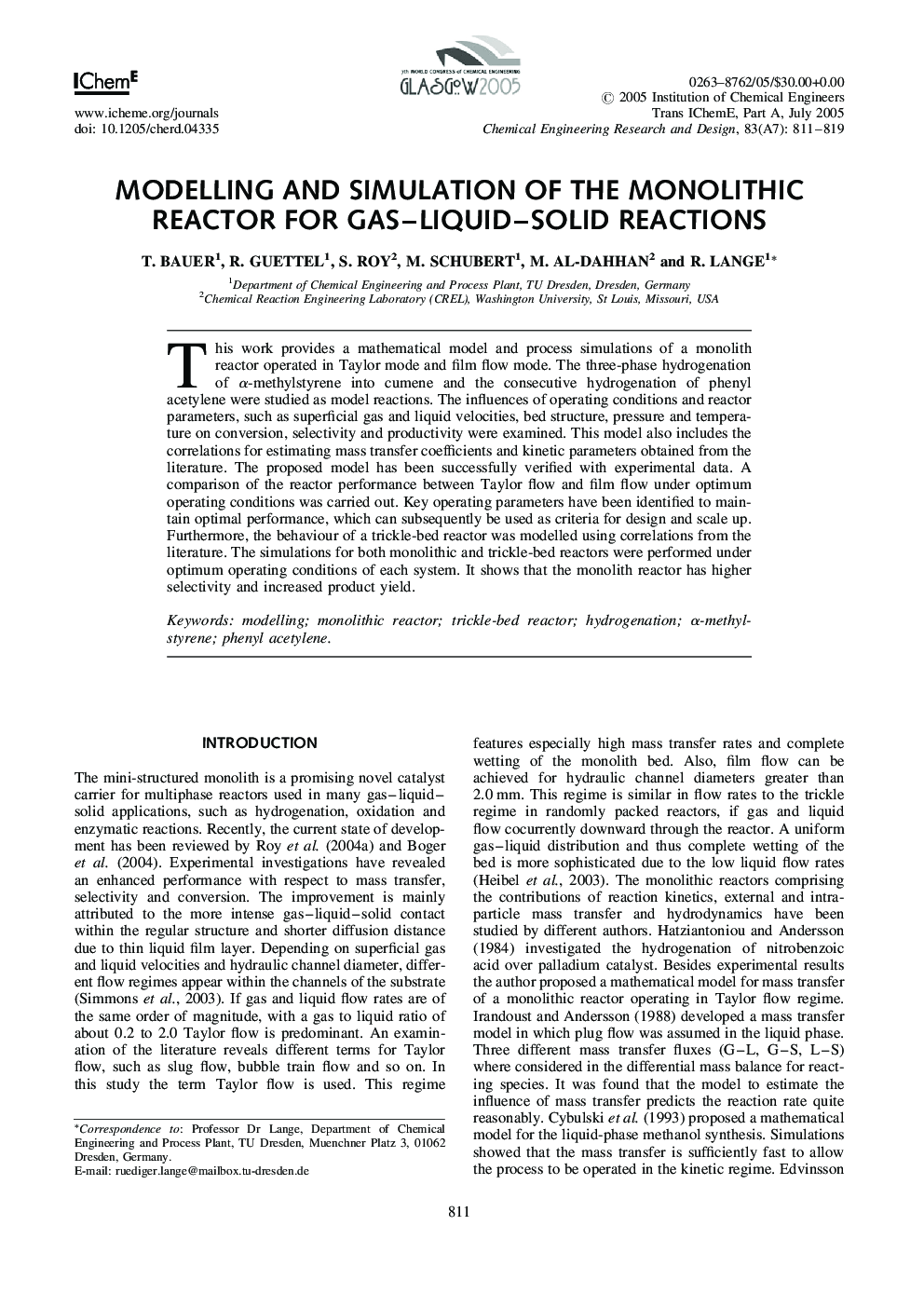| Article ID | Journal | Published Year | Pages | File Type |
|---|---|---|---|---|
| 10385209 | Chemical Engineering Research and Design | 2005 | 9 Pages |
Abstract
This work provides a mathematical model and process simulations of a monolith reactor operated in Taylor mode and film flow mode. The three-phase hydrogenation of α-methylstyrene into cumene and the consecutive hydrogenation of phenyl acetylene were studied as model reactions. The influences of operating conditions and reactor parameters, such as superficial gas and liquid velocities, bed structure, pressure and temperature on conversion, selectivity and productivity were examined. This model also includes the correlations for estimating mass transfer coefficients and kinetic parameters obtained from the literature. The proposed model has been successfully verified with experimental data. A comparison of the reactor performance between Taylor flow and film flow under optimum operating conditions was carried out. Key operating parameters have been identified to maintain optimal performance, which can subsequently be used as criteria for design and scale up. Furthermore, the behaviour of a trickle-bed reactor was modelled using correlations from the literature. The simulations for both monolithic and trickle-bed reactors were performed under optimum operating conditions of each system. It shows that the monolith reactor has higher selectivity and increased product yield.
Related Topics
Physical Sciences and Engineering
Chemical Engineering
Filtration and Separation
Authors
T. Bauer, R. Guettel, S. Roy, M. Schubert, M. Al-dahhan, R. Lange,
